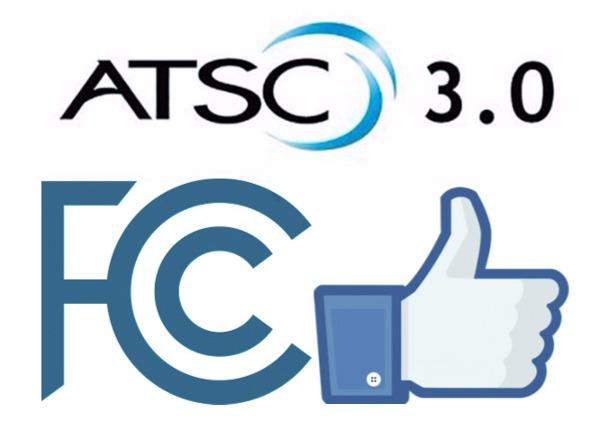I was looking forward to the implementation of the new ATSC 3.0 standard.
The Big brother watching what I watch turned me off.
I'm already sick of side pop ups on websites (soundandvision included), and annoying video commercials on my phone.
I'm quite sure that broadcasters will use the new standard to market our individual viewing habits to the tilt.
I can see it now. As I'm an old foggy, who still likes to watch the evening news (local and National), my programming will be interrupted every 8-10 minutes with three minutes of Lipitor, Viagra, Testosterone ads. Just what I need, so they will say.
No thanks.
For better and worse streaming will continue to grow in market share.
Netflix is number one, not only for their vast content, but because it's commercial free. A la carte program streaming (commercial free) will continue to grow.
FCC Approves 4K Broadcast TV Standard

The new standard, which merges the capabilities of over-the-air broadcasting with internet-delivered content using the same 6 MHz channels presently allocated for digital television (DTV), enables broadcasters to deliver 4K/Ultra HD images with high dynamic range, high frame rates, and wide color gamut along with Dolby AC-4 sound, which can carry object-based Dolby Atmos soundtracks.
Among other things, the ATSC 3.0 standard also facilitates improved reception, mobile viewing capabilities, advanced emergency alerts that would allow broadcasters to “wake up” TVs for important messages, localized content, multiple camera angles for live sporting events, and interactive educational content for children.
The FCC ruling requires broadcasters that use the new standard to partner with a local station in their market to simulcast their programming in the current (ATSC 1.0) DTV standard so viewers can continue to receive existing off-air broadcasts without having to purchase new equipment. Stations are required to simulcast content for five years and must provide advance on-air notifications to educate consumers about ATSC 3.0 service deployment.
TV signals broadcast via ATSC 3.0 will be subject to the same public interest obligations that currently apply to television broadcasters, according to the FCC.
Nonetheless, the ruling has raised concerns about privacy because advertisers will gain access to data about viewing habits under the new standard. Sinclair Broadcast Group called the new standard “the Holy Grail” for the advertiser because it tells them who is watching and where, according to a Reuters report.
Representative Debbie Dingell of Michigan was quoted in the report as saying that the ability to target advertisments “raises questions about how advertisers and broadcasters will gather the demographic information from consumers, which is necessary to do targeted advertisements.”
Hours after FCC vote last Thursday, Sinclair and subsidiary OneMedia announced plans to roll out the new TV standard nationwide.
The FCC ruling follows ATSC 3.0 field tests in Cleveland where the National Association of Broadcasters (NAB) and Consumer Technology Association (CTA) set up a living laboratory. The system was also tested in Cleveland during the 2016 World Series, marking the first time live sports were broadcast using the new standard.
“Today is a promising day for consumers, an exciting day for technological innovation, and a historic day for the broadcast business,” said FCC Chairman Ajit Pai, who voted in favor of the ruling. “By authorizing the rollout of the next generation broadcast television standard (Next Gen TV) on a voluntary, market-driven basis, we open the door to a substantially improved, free, over-the-air television broadcast service, and fiercer competition in the video marketplace.
“As the world’s first IP-based broadcast transmission platform, Next Gen TV has the potential to bring a wide range of benefits to American consumers. It will enable broadcasters to provide Ultra High Definition video and immersive audio. It will allow them to offer innovative services, including TV on smartphones and enhanced accessibility features for Americans with hearing or visual impairments. And perhaps most importantly, it will enhance our public safety capabilities. For instance, Next Gen TV will enable advanced emergency alerting that could wake up sleeping devices to warn consumers of imminent emergencies. It will also allow for localized, emergency alerts in a variety of languages, and enhanced datacasting to serve law enforcement and first responders more efficiently...
In sum, what is a vote to approve this item? Among other things, it’s a vote for innovation. It’s a vote for competition. It’s a vote for better picture quality and sound quality. It’s a vote for public safety. It’s a vote for better educational content for children. It’s a vote for enhanced accessibility features. It’s a vote for public television. And for all of these reasons, it’s a vote that I am proud to cast.”
For Pai’s full statement and statements from the other FCC commissioners, visit fcc.gov.
- Log in or register to post comments






























































